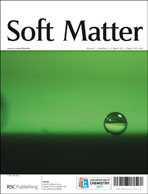As a film of dispersed colloidal particles consolidates by desiccation on a rigid substrate, enormous stresses develop. Most of the time, these stresses exceed the strength of the material causing crack formation. Although undesirable in most industrial cases, crack patterns exhibit a useful method to characterize paintings. Indeed, crack patterns are the signature of the particles, solvent and substrate type, the drying conditions and the film thickness. Here we focus on the influence of this last parameter on the final crack morphologies. In particular, using a colloidal dispersion with transparency properties, we observe that craquelures, delamination and spiral crack morphologies can be obtained by changing only the film thickness. An extensive description of the formation dynamics and final geometry of each pattern is presented, highlighting the key geometric parameters that may easily be used by a broad audience, including the mechanical engineering, physics, chemistry, geology and art communities.

You have access to this article
 Please wait while we load your content...
Something went wrong. Try again?
Please wait while we load your content...
Something went wrong. Try again?


 Please wait while we load your content...
Please wait while we load your content...